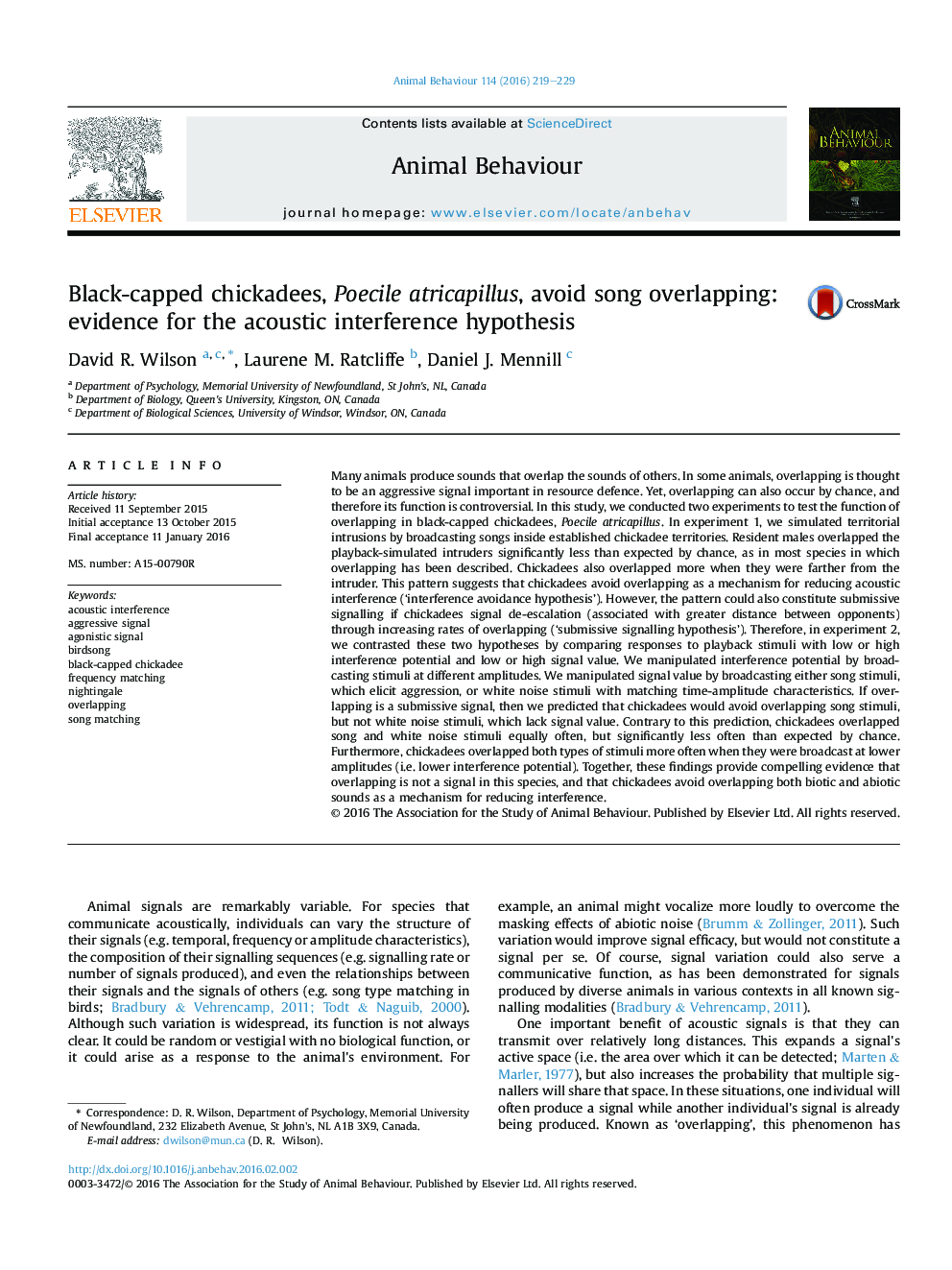| کد مقاله | کد نشریه | سال انتشار | مقاله انگلیسی | نسخه تمام متن |
|---|---|---|---|---|
| 8489209 | 1552214 | 2016 | 11 صفحه PDF | دانلود رایگان |
عنوان انگلیسی مقاله ISI
Black-capped chickadees, Poecile atricapillus, avoid song overlapping: evidence for the acoustic interference hypothesis
دانلود مقاله + سفارش ترجمه
دانلود مقاله ISI انگلیسی
رایگان برای ایرانیان
کلمات کلیدی
موضوعات مرتبط
علوم زیستی و بیوفناوری
علوم کشاورزی و بیولوژیک
علوم دامی و جانورشناسی
پیش نمایش صفحه اول مقاله

چکیده انگلیسی
Many animals produce sounds that overlap the sounds of others. In some animals, overlapping is thought to be an aggressive signal important in resource defence. Yet, overlapping can also occur by chance, and therefore its function is controversial. In this study, we conducted two experiments to test the function of overlapping in black-capped chickadees, Poecile atricapillus. In experiment 1, we simulated territorial intrusions by broadcasting songs inside established chickadee territories. Resident males overlapped the playback-simulated intruders significantly less than expected by chance, as in most species in which overlapping has been described. Chickadees also overlapped more when they were farther from the intruder. This pattern suggests that chickadees avoid overlapping as a mechanism for reducing acoustic interference ('interference avoidance hypothesis'). However, the pattern could also constitute submissive signalling if chickadees signal de-escalation (associated with greater distance between opponents) through increasing rates of overlapping ('submissive signalling hypothesis'). Therefore, in experiment 2, we contrasted these two hypotheses by comparing responses to playback stimuli with low or high interference potential and low or high signal value. We manipulated interference potential by broadcasting stimuli at different amplitudes. We manipulated signal value by broadcasting either song stimuli, which elicit aggression, or white noise stimuli with matching time-amplitude characteristics. If overlapping is a submissive signal, then we predicted that chickadees would avoid overlapping song stimuli, but not white noise stimuli, which lack signal value. Contrary to this prediction, chickadees overlapped song and white noise stimuli equally often, but significantly less often than expected by chance. Furthermore, chickadees overlapped both types of stimuli more often when they were broadcast at lower amplitudes (i.e. lower interference potential). Together, these findings provide compelling evidence that overlapping is not a signal in this species, and that chickadees avoid overlapping both biotic and abiotic sounds as a mechanism for reducing interference.
ناشر
Database: Elsevier - ScienceDirect (ساینس دایرکت)
Journal: Animal Behaviour - Volume 114, April 2016, Pages 219-229
Journal: Animal Behaviour - Volume 114, April 2016, Pages 219-229
نویسندگان
David R. Wilson, Laurene M. Ratcliffe, Daniel J. Mennill,